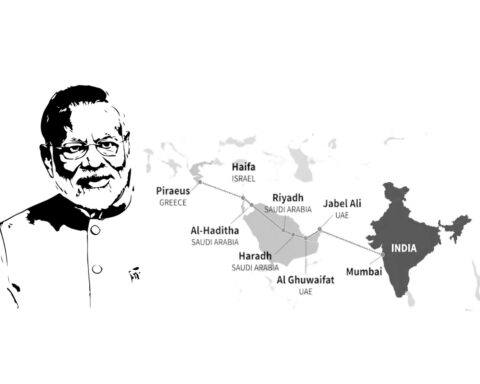While businesses are experiencing the worldwide storm, SMEs particularly feel the pinch to the bone. This pushes them to consider going global. However, sometimes the journey of exporting may end up with worse consequences.
Running a business is a significant undertaking, and expanding operations to a global scale requires even more effort and planning. Companies seeking to expand internationally should be aware that extensive preparation is necessary before entering foreign markets.
A comprehensive checklist outlining the essential steps for global market readiness should be created and utilized as a guide for the entire company. This will ensure that all employees understand their roles, the reasoning behind them, and the best ways they can contribute to the company’s success in the global market.
Motivation
First things first. What does exporting mean to your business? What lies behind your will to sell abroad? At this point, we have to understand the differences between motivation and goals. Goals are the specific destinations that we want to achieve and these destinations are meant to change something in a positive way.
To achieve the ultimate goals, we set a number of sub-goals and when all the legs of the work are performed well, this combination brings us success.
Motivation, on the other hand, comes from the inside and projects the vision.
In this case, it could be “having a global presence as a leader in a given category”, “to be the first to come to people’s minds”, “to be known as a global brand promising (sustainability, ethical trade, etc.) mission”.
What is your motivation? Why do you want to exist in global markets? What is your value proposition?
Quality & Capacity
Do you (or will you be able to) comply with the standards for exporting? The developed markets particularly stipulate certain criteria met by their suppliers such as the supply chain act, greenhouse gas emissions, ethical trade, and other related regulations.
Secondly, do you have enough capacity to meet demand? Besides your production capacity for domestic customers, you need extra for the prospective orders. Thus, according to the determined target markets and your order estimates, you’d better make a production plan beforehand.
Do you have the necessary certificates to enter various markets? Every market has its own regulations and laws. As per a given market’s requirements, study the certificates and all other market entry conditions in detail and structure your business accordingly.
These three are particularly important. In other words, are you ready to make yourself known in the global markets in terms of production capacity, quality and eligibility?
By the terms “capacity”, “quality” and “eligibility” I don’t mean providing businesses from all scales with the highest quality manufactured in the biggest production facilities. On the contrary, they should be targeting a specific segment and the company’s offer should be in line with this specific segment.
Namely, if you are a micro-enterprise with a small production capacity and making handcrafted exceptionally functional backpacks, you don’t start with big wholesalers, but rather relatively boutique and luxury stores or with end-users through cross-border e-commerce.
On the other hand, if you are a big textile factory and produce thousands of private label shirts a day, you cannot work with small-scale buyers.
You just have to do business with relatively larger brands so that economies of scale can serve its purpose.
Product
As a brand owner, the first thing you need to do to avoid many conflicts, such as intellectual property rights or compliance with various market entry conditions, is to obtain a patent or trademark registration for your product.
You don’t want to see your product being sold under a different name in the same market or your brand being sold without authorization by others.
There are also other matters to take into consideration. For one thing, are you flexible enough to modify your product as per the demands of the prospects or the legal requirements?
These could be the ingredients, content, packaging, labeling, functions, design or any other adjustments.
If it is relevant to your industry, after-sales service and technical support is another point to consider at the outset. As such services affect costs and require personnel to be sent abroad, they should be carefully evaluated.
Last but not least, What makes your product unique? How does your product differ from those of your competitors? And do they make your product more advantageous over competitors’ products?
What advantages will you offer the customer or how will you attract attention?
Do not confuse this with retail. Retail does not necessarily have to be differentiated, it must be on the shelf. When you go to a store to buy water, the brand doesn’t matter much.
Habits drive retail. But in B2B, other factors come into play: The difference and the benefit of that difference.
Without the differentiation strategy, your product will look the same as the others. So how do you get buyers to switch to you over their current suppliers?
There must be something, right?
Organization & Know-how
Is there personnel who have operational knowledge of export processes? Does the staff know about the shipping methods well? Do they know about the payment methods, what the required documents are, and which service provider to work with for which job?
On the other hand, does anyone in the export team speak a foreign language? Do they speak the language of the target markets? If not, how will you handle it?
Yes, you cannot employ a native speaker of each country where you do business abroad but you can usually get the job done in English. But if you target, for example, Germany as your biggest market, having a German-speaking staff would give you an edge in terms of cooperation, communication and service quality.
Depending on the size of the company and the volume of operations, there is a need for a team that will manage the business smoothly and systematically. This team should work in tandem with each other for a smooth follow-up and easy execution of the job.
When a member of the team leaves the job, the person who will replace her/him immediately gets into the system with a clear understanding of what has been done, what is being done and what will be done.
Until the new personnel arrives, the other team members must be able to understand at what stage the work is and continue from there.
The boss or superior may be out of this workflow, but when she/he wants to check out on them from time to time, he can immediately understand what the situation is, and can intervene when necessary, such as giving advice and getting information.
In other words, creating a systematic workflow for the overall business ensures that everyone in the company knows what stage the business is at and can be involved when needed.
Goals
Motivation and goal may seem the same, but unlike motivation, goals are concrete tasks that set clear steps to bring your motivation to life.
“I want to start exporting and expand globally.” It’s a motivation. The dream of going global is what gets you excited. In order to achieve this, we need to set SMART goals.
Let’s ask ourselves these questions:
Are we clear on our goals? Have we determined them? What exactly do we want to achieve?
How will we measure our performance as we move toward our goals? What metrics will we use?
How soon will we achieve the targeted results? How long does it take exactly?
With these questions, we set the steps for the ultimate success we aim for.
For example, a concrete goal is how much profit we want to make in a given market over a certain period of time. What is our target return goal on a percentage or value basis in our target markets?
How many countries do we aim to export to in [5] years?
These goals can be easily achieved with the SMART technique. Or it could turn out to be unrealistic at all, and they’re revised.
Plan & Budget
When preparing for export, make sure to align planning with your budget. You cannot make effective planning without knowing how much of resources to allocate.
Leaving aside the production planning, especially your market research, marketing and promotion activities will be determined according to your budget.
So what could these expenditure items be?
Market visits
Promotional materials (website, catalog, brochure, translation service etc.)
Trade shows and related promotional expenses
Personnel training costs
Documentation
Market research reports
Digital marketplace memberships
3rd party services
Digital ads and so on.
It is clear that these expenditures cannot be made so haphazardly. If we want to get results, detailed budgeting is crucial
Brand
Are all your efforts just production-focused? You are good at your job, you have a great product, no question; but, how successful do you see yourself in putting the product in front of the customer? Can you successfully promote such a good product? Are you successful in making customers understand the value of the product? How do you manage branding?
Do you think you are successful in promoting your products and brand through your website, social media accounts with videos, quality images, graphics and designs? This is a very important issue. No matter how a perfect product you have, it’s all about marketing.
You have to start marketing yourself before your product. Buyers are also interested in you. They want to get to know you, see your production, and learn as much as possible about your business.
Today, you can mostly achieve this through digital media. In addition to showing up at trade shows held several times a year, a great website, professionally managed social media accounts can also become a customer magnet. They will help you reach out to prospects you’ve never met.
After all, there is a big difference between the number of visitors to the fair and the number of those who did not come. Buyers with whom you cannot meet face to face and who do not know you yet, research you through digital channels and evaluate you with your brand recognition.
So the question is; are you able to promote your brand in digital media well?
Does your brand have semantic elements that make it distinctive in the market? Do you have a brand identity that will help you to be recognized in foreign markets?
Does your brand give a distinctive visual and semantic message to the world?
How do you want to position the brand? Make it crystal clear in the first place.
Competition
Do you know your competitors? Do you know who your domestic and foreign competitors are?
Where are your competitors selling to? In which countries are they strong and in which ones are they weak? What do they do differently from you? What are their strengths? What are their strategies and tactics? What are their achievements? What are their advantages over you?
Are they stronger or more well-known in the industry? Do they have more marketers than you? Do they participate in a lot more trade shows? Do they have business partners abroad? Are their technologies more advanced? How do they position themselves in the market?
It is necessary to follow the opponents closely and learn about their strengths and weaknesses. That’s why you should do a SWOT analysis not only of yourself but also of your opponent so that all differences, advantages, disadvantages, shortcomings, deficits and opportunities are visible.
If you know how to watch the opponent, you also know how to defend yourself.
Bottom line
Exporting can be a challenging and risky endeavor for businesses, particularly small and medium-sized enterprises (SMEs). Before considering going global, you should thoroughly prepare by understanding your motivation and goals, ensuring you meet quality and capacity standards, and obtaining necessary certificates or patents, etc.
You should also consider your target markets and how your products fit into those markets. It is important to have a written export plan to ensure that everyone at the company understands and is prepared for the process.
















Going global with a business is an exciting yet daunting step, and your post covers all the important aspects one must consider before taking the leap. From understanding the market and cultural differences to building a solid legal framework, your comprehensive list will definitely help businesses avoid potential risks and pitfalls. Thank you for sharing these insightful tips!
Thank you Jobin.